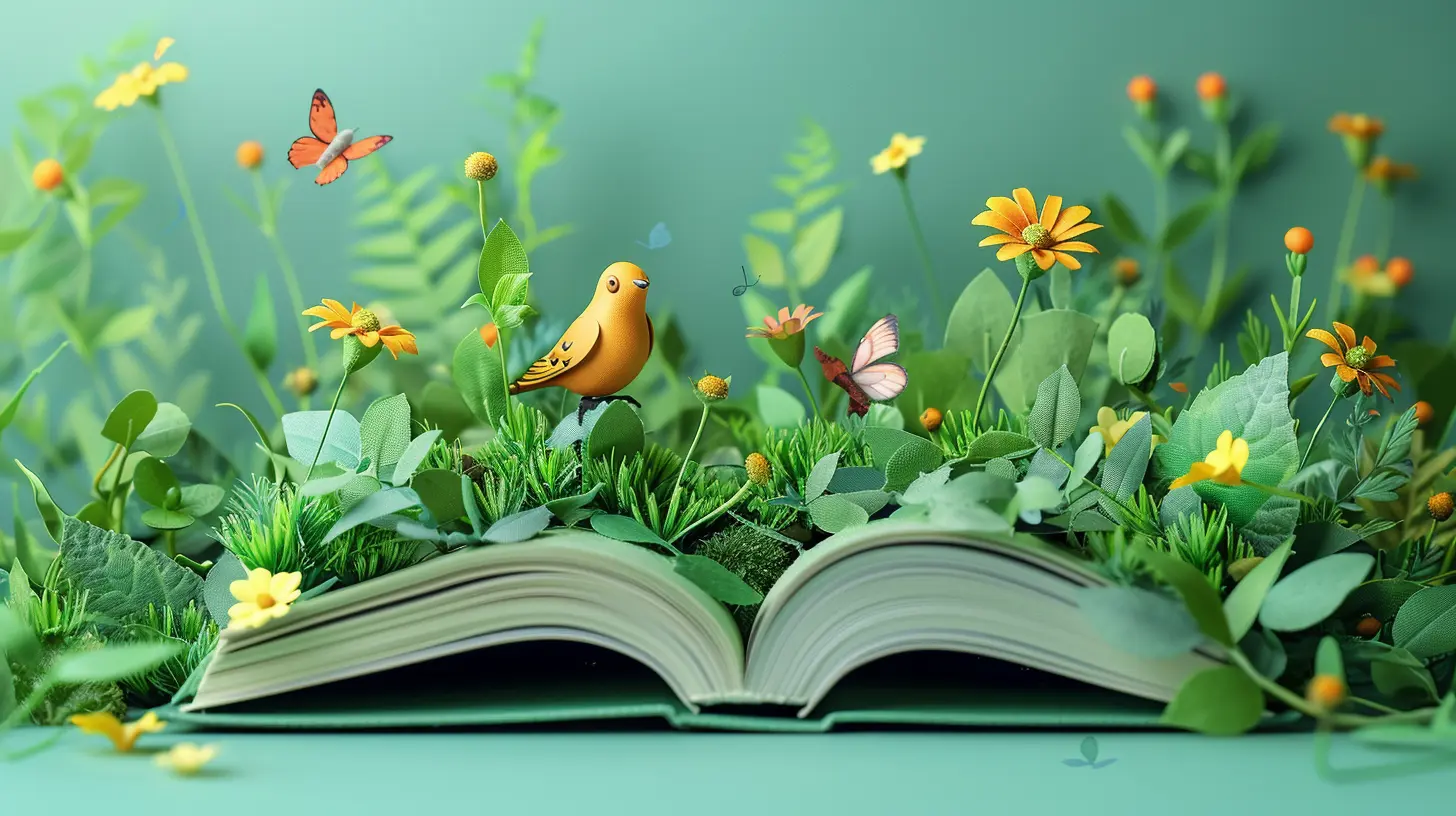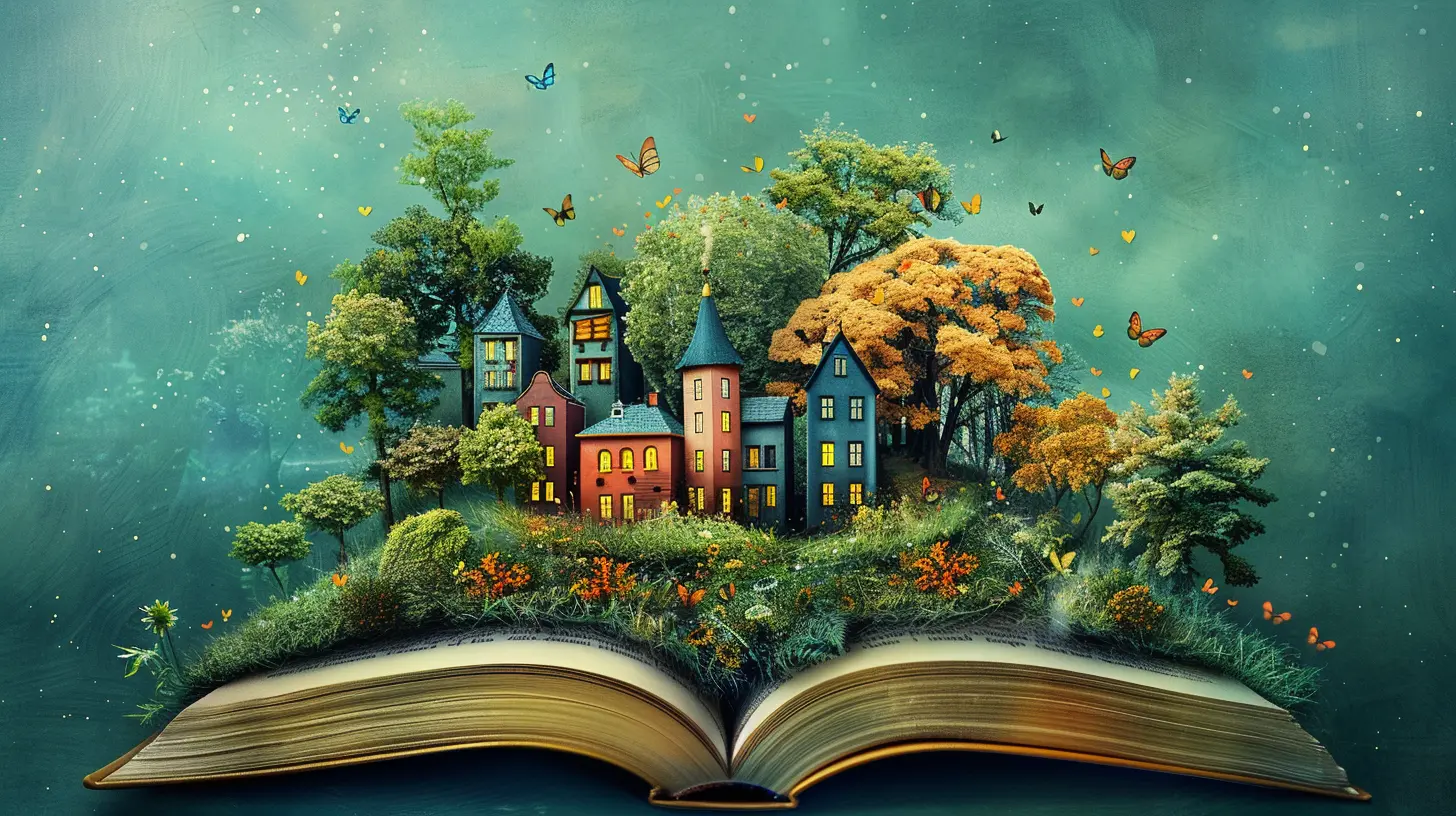Creating a Love of Poetry in Your Child Through Rhyming Books
17 July 2025
Introduction
Let’s be real—most kids don’t wake up one morning and declare, “Mom, Dad, I simply must analyze the complex meter of Robert Frost today.” Nope. Poetry, at first glance, might just seem like something stuck in an old book with words that don’t make sense. But what if I told you that getting your child to love poetry is as easy as reading them a rhyming bedtime story?
Yep, that’s right! Rhyming books are like the gateway drug to poetry (but, you know, a totally safe and legal one). They sneak rhythm and rhyme into little ears while making kids giggle, engage, and maybe even start rhyming themselves. So, let’s break it down—how can you use rhyming books to turn your child into a poetry lover without making it feel like homework?

Why Rhyming Books Are the Secret Sauce
Here’s the thing: kids naturally love rhythm. Ever noticed how toddlers bounce to music before they can even talk? That’s because rhythm and rhyme help build language skills, memory, and, yes, even a love for poetry.Rhyming books:
- Boost language development – Kids start identifying patterns in sounds, which helps them understand language better.
- Improve reading skills – When words rhyme, kids can predict what’s coming next, making reading feel easier (and more fun!).
- Make storytelling engaging – A boring story is like unsalted popcorn—why bother? But a rhyming book? That’s like buttery, theater-style goodness.

Choosing the Right Rhyming Books
Not all rhyming books are created equal. Some are fun and playful, while others sound like someone rhymed just for the sake of it (and yes, kids can tell). Here’s what to look for when picking a rhyming book to hook your little one:1. Books with Strong, Catchy Rhymes
Think of books like Dr. Seuss’s Green Eggs and Ham or Sandra Boynton’s Barnyard Dance!. These books don’t just rhyme—they bounce off the tongue in ways that make kids want to repeat them.2. Stories That Make Sense
If a book rhymes but doesn't make any logical sense, kids won’t connect with it. Find books with fun and engaging stories that also happen to rhyme—like Room on the Broom by Julia Donaldson, which tells a proper story while keeping the rhythm alive.3. Interactive or Repetitive Elements
Books like The Pout-Pout Fish make kids want to chime in because they repeat phrases and patterns. If your child starts “reading” along with you, congratulations—you’ve just planted the poetry seed.
Making Poetry a Fun Part of Everyday Life
Once you’ve got the rhyming books rolling, how do you make sure that poetry doesn’t just become another thing that gets ignored like those veggies on their plate? Here are some sneaky (but fun) ways to keep poetry alive at home:1. Turn Everyday Moments into Rhymes
Instead of saying, “Time to put on your shoes,” why not sing, “Shoes on feet, make it neat, let’s go fast and hit the street!” Okay, sure, you might sound like a walking cartoon character, but kids eat that stuff up.2. Write Silly Poems Together
You don’t have to be Shakespeare to make your kid giggle with poetry. Try something like:*"There once was a mom from Peru,
Who found bubblegum stuck to her shoe.
She hopped up and down,
With a terrible frown,
'Til the gum made her new socks stick too!"*
Boom. Instant fun.
3. Have a Rhyme Battle
Challenge your child to a rhyming duel. You say, “Let’s go play outside,” and they have to come up with a rhyming response like, “But I’d rather sit and hide!” The weirder, the better.4. Record Their Rhymes
Kids LOVE hearing their own voices. Try recording them making up funny rhymes, then play it back for them. That moment when they realize they created that magic? Priceless.
Transitioning from Rhyming Books to Real Poetry
At some point, you’ll want to gently nudge your child toward actual poetry (you know, the kind without talking animals). But don’t worry—there’s an easy way to do it.Start with playful poets like Shel Silverstein (Where the Sidewalk Ends) or Jack Prelutsky (A Pizza the Size of the Sun). Their poems are hilarious and easy to digest, making them the perfect stepping stones from rhyming books to “real” poetry.
Once your child enjoys those, try sneaking in some classic poems with rhythm, like:
- The Owl and the Pussycat by Edward Lear
- Jabberwocky by Lewis Carroll
- Stopping by Woods on a Snowy Evening by Robert Frost (a little more serious but still rhythm-heavy)
The Long-Term Benefits of Poetry
By making poetry fun from the start, you’re not just setting your child up to appreciate a good rhyming book—you’re helping them in ways you wouldn’t even expect.- Better verbal skills – Rhyming helps kids become better readers and speakers.
- Stronger creative thinking – Poetry makes you think outside the box, unlocking your child’s imagination.
- A love for words – When kids love words, they love stories. And when they love stories, they learn without even realizing it.
Final Thoughts
At the end of the day, raising a poetry-loving kid isn’t about forcing Shakespeare down their throats. It’s about making words fun, magic, and maybe just a little bit silly. Rhyming books are the golden ticket to that world. So, start reading, start rhyming, and before you know it, your little one might just be crafting their own poems—no bribery required.all images in this post were generated using AI tools
Category:
Childrens BooksAuthor:

Tara Henson
Discussion
rate this article
1 comments
Ian Sanchez
Spark imagination and joy through the magic of rhymes!
August 2, 2025 at 4:44 AM

Tara Henson
Thank you! Rhymes truly unlock endless creativity and delight in young minds!


